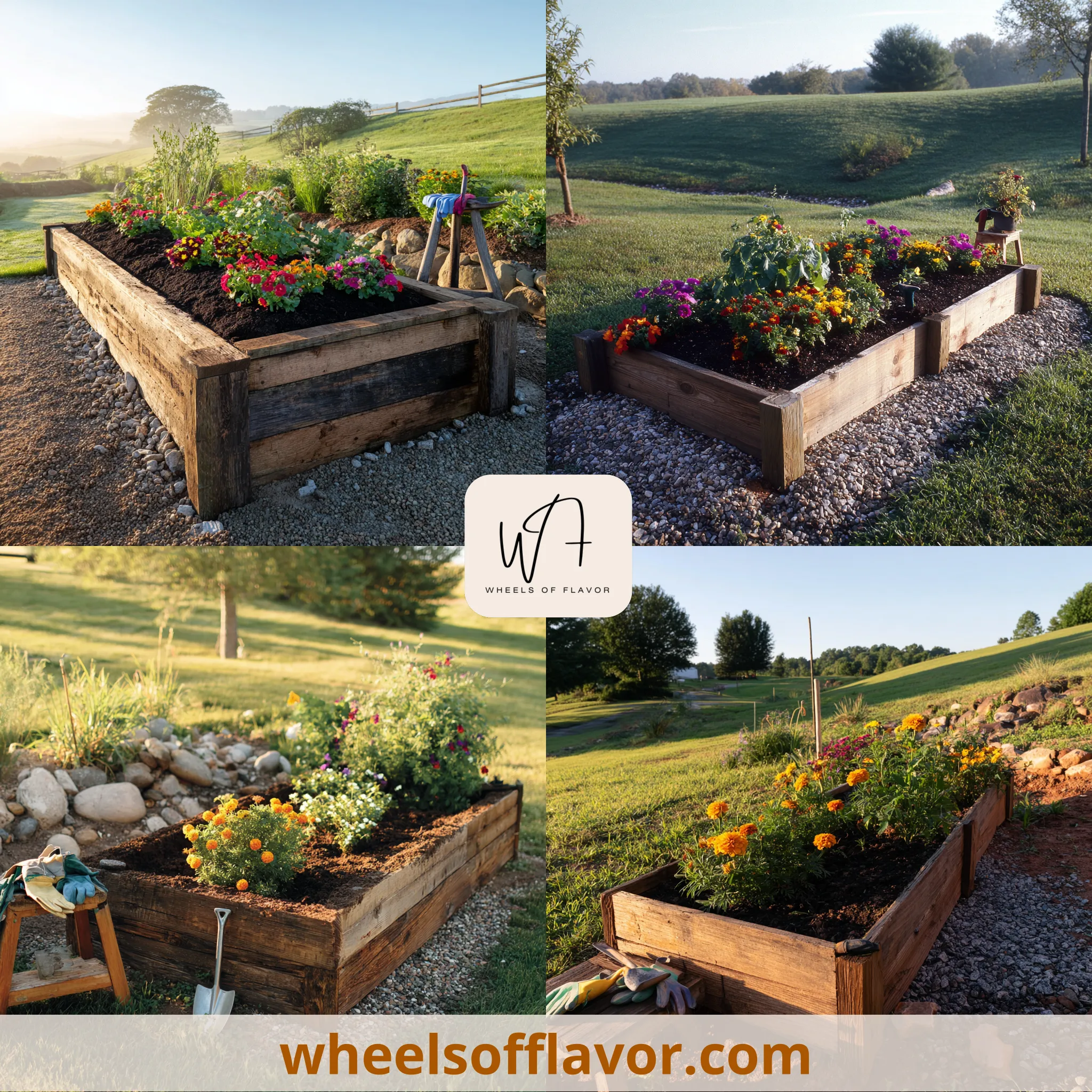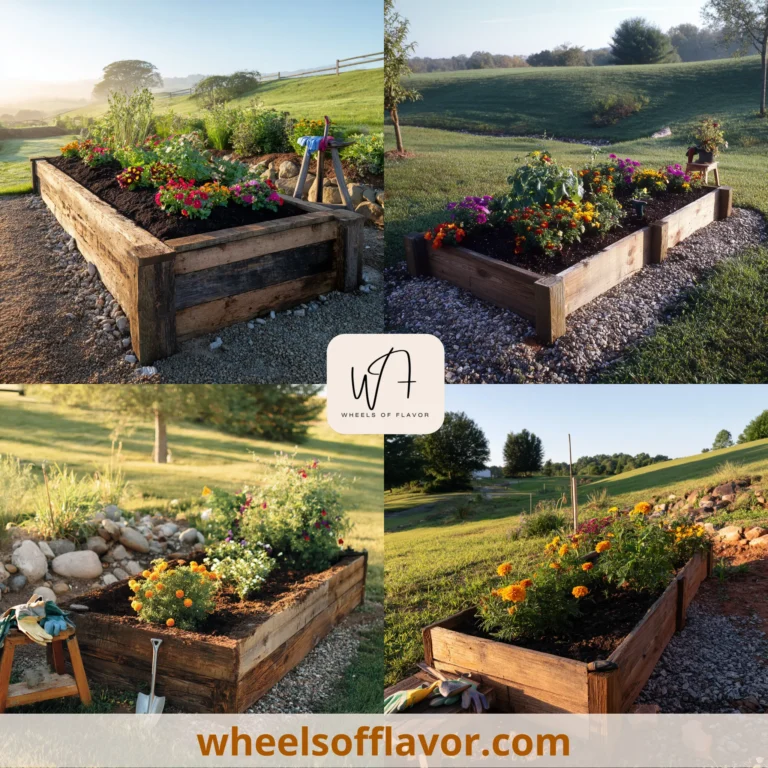
Proper drainage is the unsung hero of any successful garden, and when it comes to flower beds, it can mean the difference between vibrant blooms and waterlogged disaster. Many gardeners focus on soil quality and sunlight but overlook the critical role drainage plays in plant health. Without adequate drainage, water accumulates around roots, leading to rot, fungal diseases, and stunted growth. This article explores practical flower bed drainage ideas to transform your garden into a flourishing oasis. We’ll cover why drainage matters, common issues like compacted soil or poor slope, and how simple fixes can prevent costly plant loss. Whether you’re dealing with heavy clay soil or frequent rainfall, these strategies ensure your flowers get the right balance of moisture and air. Investing time in drainage now saves heartache later, making your garden more resilient and beautiful. Ready to dive in? Let’s start with the basics of assessing your current setup and move to actionable solutions that fit any budget. For more gardening tips, check out this guide from the Royal Horticultural Society on soil management. Remember, a well-drained flower bed is a happy one!
Assessing Your Flower Bed Drainage Needs
Before implementing any flower bed drainage ideas, it's crucial to evaluate your current situation. Start by observing how water behaves after a rainfall. Does it pool in certain areas or drain quickly? Perform a simple percolation test: dig a hole about 12 inches deep, fill it with water, and time how long it takes to empty. If it drains slower than an inch per hour, you have drainage issues. Common causes include compacted soil, which restricts water flow, or a high water table. Soil type matters too; clay soils hold water, while sandy soils drain too fast. Consider the slope of your flower bed—ideally, it should tilt away from structures to prevent flooding. Also, look for signs of poor drainage in plants, like yellowing leaves or mold. This assessment helps you choose the right solutions, whether it's adding organic matter or installing drains. For DIY enthusiasts, this step is manageable with basic tools. If you're unsure, consult local extension services for soil testing. Addressing these factors early ensures your flower bed drainage ideas are effective and tailored to your garden's needs. Proper assessment saves time and money, leading to healthier plants. Check out https://wheelsofflavor.com/ for more on garden planning.
Simple Flower Bed Drainage Solutions for Beginners
If you're new to gardening, start with easy flower bed drainage ideas that don't require heavy machinery. One of the simplest methods is amending the soil with organic matter like compost or peat moss. This improves soil structure, allowing water to percolate better. Aim for a mix of 30% organic material to 70% native soil. Another beginner-friendly option is creating raised beds, which elevate the soil and enhance drainage naturally. Use untreated wood or stone borders to build beds 6-12 inches high. For existing beds, try hilling soil into mounds around plants to direct water away from roots. You can also incorporate coarse sand into clay soils to increase porosity. If puddling is an issue, dig shallow trenches along the bed's edge to channel water elsewhere. These solutions are low-cost and can be done in a weekend. Remember to water deeply but infrequently to encourage deep root growth, which helps plants tolerate wet conditions. Mulching with straw or wood chips also aids moisture regulation. These flower bed drainage ideas are perfect for small spaces or container gardens. They demonstrate that good drainage doesn't have to be complicated. With these steps, even novice gardeners can prevent water-related problems and enjoy lush flowers all season.
Advanced Flower Bed Drainage Techniques for Challenging Areas
For gardens with severe drainage issues, advanced flower bed drainage ideas involve more structural changes. French drains are a popular choice: dig a trench lined with gravel and a perforated pipe to redirect water away from the bed. Place the pipe at a slight slope to ensure water flows efficiently. Another technique is installing dry wells, which are underground chambers that collect and slowly release water. This is ideal for low-lying areas where water accumulates. If your flower bed is near a slope, consider terracing to create level platforms that reduce runoff and erosion. Use retaining walls made of stone or timber to hold soil in place. For urban gardens with limited space, subsurface drainage mats can be laid beneath the soil to wick moisture away. These methods may require tools like shovels and levels, so plan carefully. It's also wise to consult local regulations before digging deeply. Combining these with soil amendments maximizes effectiveness. For instance, after installing a French drain, top with well-draining soil mix. These flower bed drainage ideas address root causes, providing long-term solutions. They protect investments in perennials and shrubs, ensuring your garden thrives despite heavy rains or poor soil conditions. Learn more about advanced techniques from gardening experts online.
Conclusion
Mastering flower bed drainage ideas is key to a resilient and beautiful garden. Throughout this article, we've covered everything from basic assessments to advanced techniques. Proper drainage prevents root rot, promotes healthy growth, and reduces maintenance. Start by evaluating your soil and slope, then choose solutions that fit your skill level and budget. Simple steps like adding compost or building raised beds can make a big difference. For tougher cases, French drains or terracing offer reliable fixes. Remember, good drainage complements other garden practices, such as proper watering and mulching. As climate patterns shift, with more intense rainfall in some regions, investing in drainage becomes even more crucial. Look ahead by incorporating sustainable elements, like rain gardens that manage runoff while supporting pollinators. Share your success stories with fellow gardeners to spread knowledge. With these flower bed drainage ideas, you're equipped to turn challenges into opportunities. Your flowers will thank you with vibrant colors and longevity. For ongoing inspiration, explore https://wheelsofflavor.com/ for related DIY projects. Happy gardening!
Frequently Asked Questions
Q: How can I tell if my flower bed has poor drainage?
Signs include water pooling after rain, plants with yellowing leaves, slow growth, or mold on soil surface. Perform a percolation test by digging a hole, filling it with water, and timing drainage—if it takes over an hour to drop an inch, improvement is needed.
Q: What is the cheapest way to improve flower bed drainage?
Amending soil with organic matter like compost is cost-effective. It loosens compacted soil, enhancing water flow. Also, creating mounds or shallow trenches requires minimal tools and can be done with household items, making it budget-friendly.
Q: Can I over-drain my flower bed?
Yes, over-draining can dry out soil too quickly, stressing plants. Balance is key; ensure drainage methods allow some moisture retention. Test soil moisture regularly and adjust watering schedules to match your garden's needs.

